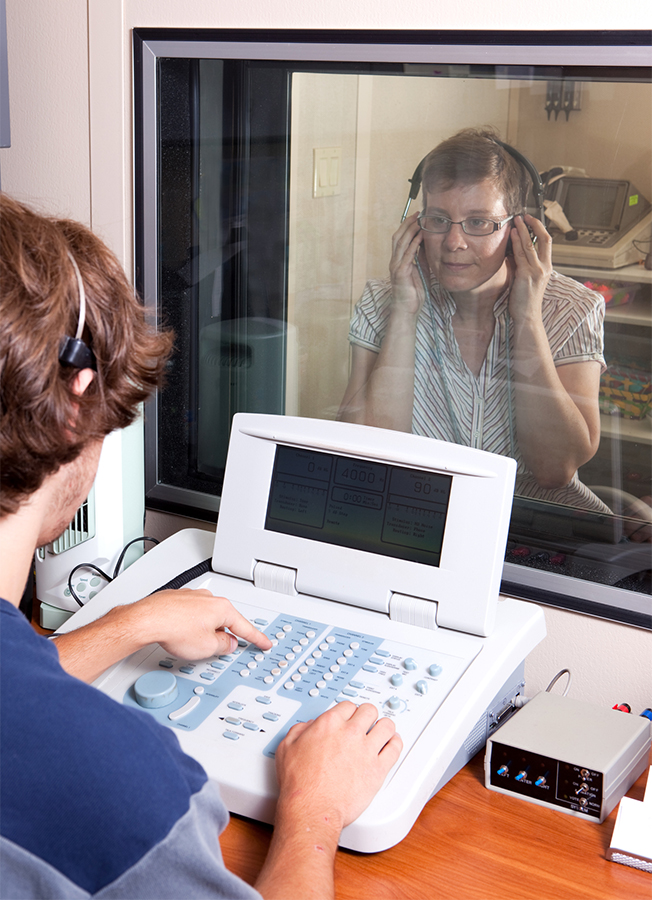Hearing Loss

Dr. Lieberman does not dispense (sell) hearing aids and thus is uniquely positioned to make a completely unbiased recommendation regarding the need for amplification.
Conductive
A problem in the outer or middle ear causes conductive hearing loss. A conductive loss prevents sound from reaching the nerves in the inner ear. Common causes include:
- Conditions associated with middle ear pathology such as fluid in the middle ear from colds, allergies, poor Eustachian tube function, ear infection, perforated eardrum, benign tumors
- Impacted earwax
- Infection in the ear canal
- Presence of a foreign body
- Absence or malformation of the outer ear, ear canal, or middle ear
Sensorineural
Damaged nerves in the inner ear cause sensorineural hearing loss. Sensorineural losses cannot be reduced or eliminated by surgery. There are many causes, differing by age of onset.
Before or During Birth:
- Perinatal infections such as rubella, herpes, toxoplasmosis, syphilis, cytomegalovirus (CMV)
- Heredity
- Asphyxia or lack of oxygen at birth.
- Possible association with birth weight of less than 1500 grams.
- Possible association with defects of the head and neck
Later Onset:
- Bacterial meningitis
- Ototoxicity (drug induced)
- Intense or excessive noise
- Physical damage to head or ear
Mixed
Sometimes, people will have problems both in the inner ear and in the outer or middle ear. This type of hearing loss is known as a mixed loss.
Hearing Tests
A complete range of adult and pediatric audiograms (hearing tests) can be performed right in our office.
A diagnostic audiogram uses sounds of specific frequencies and intensity levels to determine what a person can hear in each ear. The sounds are heard through headphones and the patient is asked to identify each time they hear a sound and in which ear. The sounds will become lower and lower to determine the level that a patient can barely hear. An audiogram may also include speech in the form of 2 syllable words to determine how well a patient can comprehend what is being said. Normal results allow for a patient to hear a normal speaking voice, whisper and ticking of a clock.
Another common type of audiologic testing is tympanometry. It examines and diagnoses problems in the middle ear by varying air pressure in the ear canal to see how the eardrum responds. Abnormal results could be due to fluid in the middle ear, a perforated eardrum or impacted earwax.



